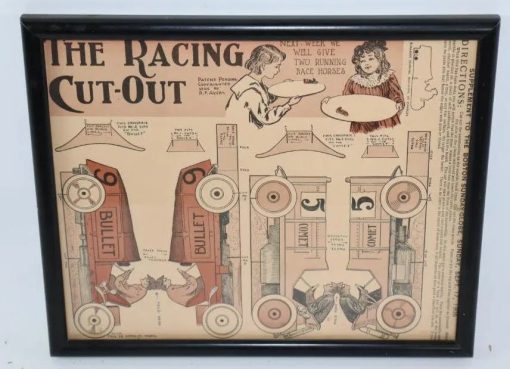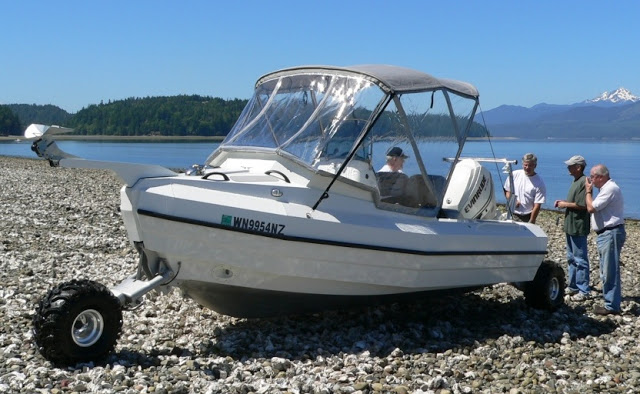Eighties Icon Ferrari Testarossa Now Available on Hemmings Auctions
Is there a more definitive car from the Eighties than the Ferrari Testarossa?
The object of desire captured in many a poster that lined bedroom and dorm room walls, the Testarossa was among a handful of headline-making supercars from the decade. With its powerful flat-12 engine and wedge-with-curves design, the Testarossa combined high style with sports car performance in an unmistakable package. Finished in the poster-appropriate hue of Rosso Dino, this 1990 Ferrari Testarossa is now available on Hemmings Auctions.
Ferrari had plenty of experience making 12-cylinder sports cars by the 1980s. The first car bearing the Ferrari name, 1947’s 125S, was powered by the first version of Gioacchino Colombo’s famed V12, an engine that lived on in various forms through 1988. In the case of the 125S, its 1.5-liter, SOHC V12 was rated at 116 horsepower. That engine grew over the years to as much as 4.9 liters and with an additional pair of camshafts. A version of the Colombo V12 powered the mighty 365 GTB/4 Daytona in the late 1960s and early 1970s, but when Ferrari replaced the Daytona with the 365 GT4 BB in 1973, it completely changed the formula for its top sports car.
Mid-Engine V12 Ferrari for the Road
Following in the footsteps of Italian rival Lamborghini, Ferrari went with a mid-engine design in lieu of its more traditional front-engine layout. Ferrari’s dominant race cars from the early 1960s and on all had their engines in front of the rear axle and behind the driver. It only made sense for one of the world’s most renowned sports car makers to follow suit in its top roadgoing sports cars. Ferrari’s entrants in Formula 1 and top-level sports car racing had also been powered by flat-12 engines since the 1960s as well.
The mid-engine 365 GT4 BB (for “Berlinetta Boxer”) was powered by a 4.4-liter flat-12, sometimes referred to as a “180-degree V12” owing to each pair of opposing connecting rods sharing the same crank pin, meaning that each pair of opposing pistons moved together. The 365’s successor, the BB 512 and later BB512i, featured a 4.9-liter flat-12. That final, fuel-injected version of the BB 512i was rated at 360 horsepower and formed the basis for the red-headed powerplant in the Testarossa.

Redheaded Flat-12
The 1980s Testarossa name, which translates from the Italian term for “redhead,” was pulled from Ferrari history, as the 250 Testa Rossa (two words) proved a dominant sports racing car of the late 1950s and early 1960s, including multiple Le Mans and Sebring victories. The flat-12 in the all-new Testarossa in 1984, developed as the Tipo F113 engine, displaced the same 4,943 cc as its predecessor, but was equipped with four valves per cylinder and was rated at 380 horsepower, giving the new redhead bragging rights as one of the fastest cars in the world with a top speed over 180 mph. It’s 0-60 mph sprint of 5.0-seconds was also near the top of the production car chart at the time. Like its late Fifties predecessor, the Testarossa displayed red painted rocker covers on its engine, staying true to its name.
The flat-12’s need for air dictated one of the most distinctive traits of the Testarossa’s iconic design. The wide air intakes built into the sides of the body behind the doors were protected by side strakes that the designers carried over into the doors where they flowed into the body. Those same horizontal lines were mimicked at the rear of the car. Though the rear window was vertical, flying buttress type of extensions that formed the C-pillars tapered down toward the rear of the car. Even Ferrari archrival Lamborghini integrated similar strakes in its updated design for the 25th anniversary edition Countach.

This 1990 Ferrari Testarossa now available on Hemmings Auctions is noted by the seller as being in “great condition.” The odometer showed just under 47,000 miles at the time of submission, demonstrating that this Italian thoroughbred has been enjoyed by prior owners. The seller’s notes also include information about an engine rebuild, but “no concerns” about the present operating condition of the powertrain, including the five-speed manual gearbox, with a gated shifter as per Ferrari tradition.
Though some basic wear shows in the tan leather driver’s seat, no accidents are indicated and no other needs are noted. The headliner, switch gear and other interior trim all appear to be intact and in good condition in the photos provided by the seller. Head on over to Hemmings Auctions and let us know in the comments section there if this Eighties icon ever lived on a poster in your bedroom.

The post Eighties Icon Ferrari Testarossa Now Available on Hemmings Auctions appeared first on The Online Automotive Marketplace.


